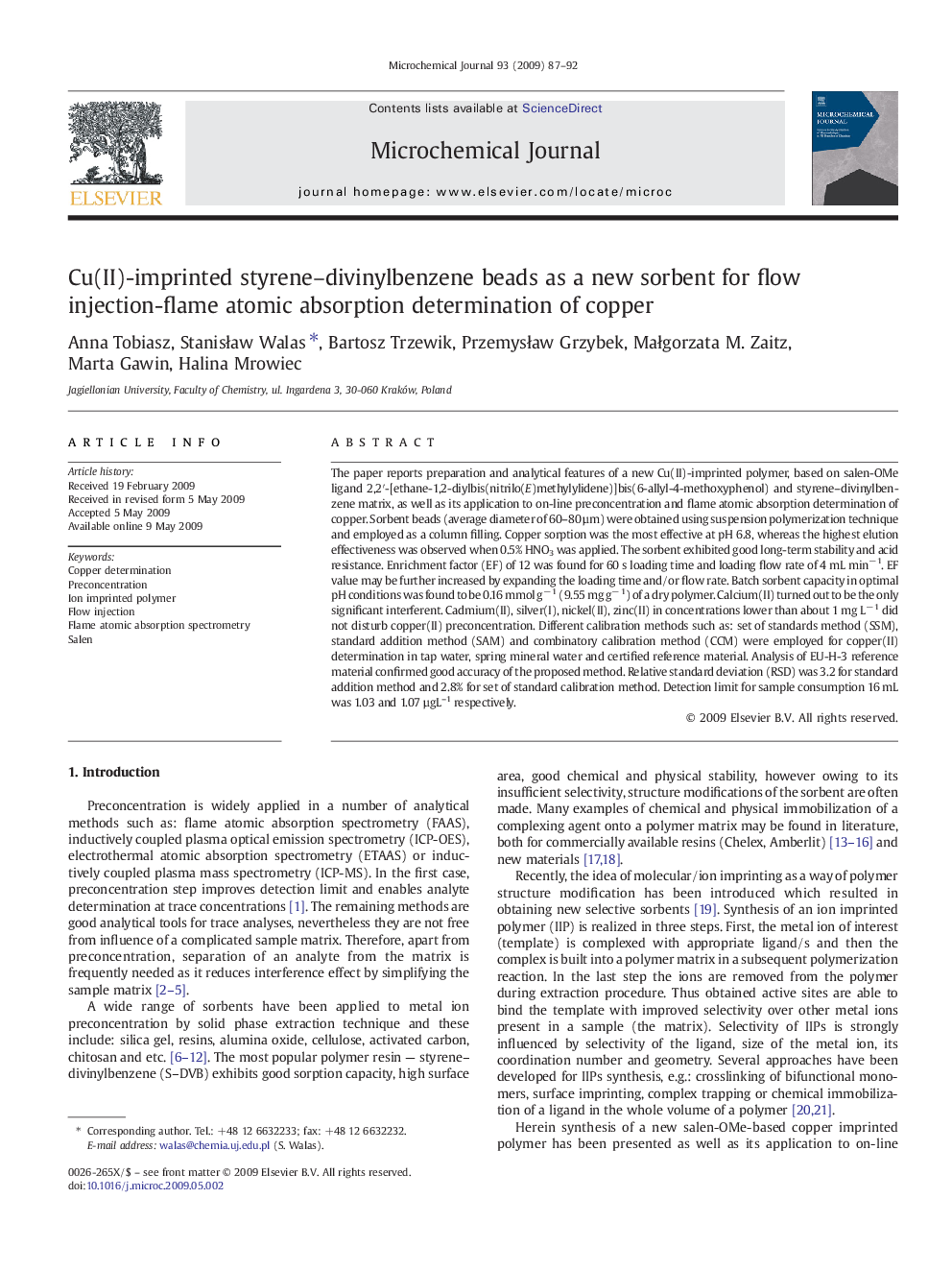| Article ID | Journal | Published Year | Pages | File Type |
|---|---|---|---|---|
| 1228488 | Microchemical Journal | 2009 | 6 Pages |
The paper reports preparation and analytical features of a new Cu(II)-imprinted polymer, based on salen-OMe ligand 2,2′-[ethane-1,2-diylbis(nitrilo(E)methylylidene)]bis(6-allyl-4-methoxyphenol) and styrene–divinylbenzene matrix, as well as its application to on-line preconcentration and flame atomic absorption determination of copper. Sorbent beads (average diameter of 60–80 µm) were obtained using suspension polymerization technique and employed as a column filling. Copper sorption was the most effective at pH 6.8, whereas the highest elution effectiveness was observed when 0.5% HNO3 was applied. The sorbent exhibited good long-term stability and acid resistance. Enrichment factor (EF) of 12 was found for 60 s loading time and loading flow rate of 4 mL min− 1. EF value may be further increased by expanding the loading time and/or flow rate. Batch sorbent capacity in optimal pH conditions was found to be 0.16 mmol g− 1 (9.55 mg g− 1) of a dry polymer. Calcium(II) turned out to be the only significant interferent. Cadmium(II), silver(I), nickel(II), zinc(II) in concentrations lower than about 1 mg L− 1 did not disturb copper(II) preconcentration. Different calibration methods such as: set of standards method (SSM), standard addition method (SAM) and combinatory calibration method (CCM) were employed for copper(II) determination in tap water, spring mineral water and certified reference material. Analysis of EU-H-3 reference material confirmed good accuracy of the proposed method. Relative standard deviation (RSD) was 3.2 for standard addition method and 2.8% for set of standard calibration method. Detection limit for sample consumption 16 mL was 1.03 and 1.07 µgL–1 respectively.
